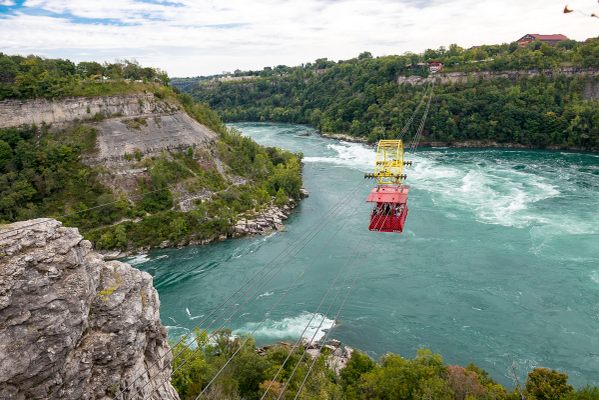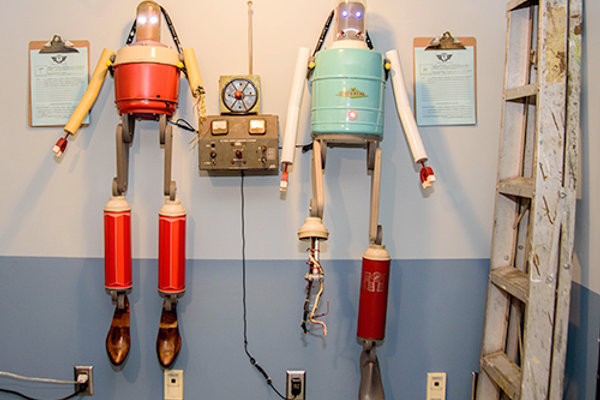About
Designed by renowned Spanish engineer, Leonardo Torres Quevedo, the Whirlpool Aero Car has been soaring the Niagara Gorge since 1916. The antique cable car is suspended from six sturdy cables and offers spectacular views of the swirling Niagara Whirlpool and the Class 6 whitewater rapids of the Niagara River.
Although the Whirlpool Aero Car travels between two points on the Canadian shore, riders of this historic cable car actually cross the international border line between Canada and the United States a total of four times each trip due to the way the river elbows.
The Aero Car was designed by Spanish engineer and inventor Leonardo Torres y Quevedo, who, in addition to other cable trams, also developed the first form of radio control unit, a famous chess playing automaton, non-rigid airships that were used by the French in WWI, and what may be the first mechanical computer (now on display at the Technical University of Madrid). He was also a vigorous supporter and user of the Esperanto. The son of a railway engineer, he built his first cable tram in Spain in 1887, the log seat was pulled by cows over a span of some 200 feet.
The Whirlpool Aero Car is a somewhat more sophisticated design. Suspended on six interlocking steel cables for safety, and powered by a small motor, the Aerocar holds 35 passengers for a 10 round-minute trip over the Niagara whirlpool. The whirlpool itself is a basin 1700 feet by 1200 feet, where the rushing waters create a counterclockwise vortex around the pool.
The tramway crossing over the whirlpool was the idea of J. Enoch Thompson (for whom the tram departure spot "Thompson Point" is named), a Niagara local, and it was designed and built by the all-Spanish team of the The Niagara Spanish Aerocar Co. Limited. The tram opened for service in 1916, spanning 1800 feet and riding at a height of 250 feet over the water at each end of the cables, with a low of 150 feet in the center.
Niagara Falls has long been associated with daredevil stunts of varying levels of bravery or lunacy. In the summer of 1975, a French high wire artist named Henri Rechatin arrived in the predawn hours with his wife, a specially modified motorcycle, and a moto-cross driver with no previous high-wire experience. At 6:30 am they set out across the Aerocar cable, Henri balanced above, his wife Janyck hanging below by her feet. When the wind picked up, Henri walked the final 15 feet to the northern terminal, pulled the motorcycle in, and waited in the Aerocar for the operator to arrive. The three were arrested but never charged. Rechatin returned for other nearby high wire stunts in 1976, but stayed over land instead of the falls. His repeated requests for an encore performance were refused by the Niagara Commission.
That the separate fourpassenger rescue car has only ever been used in training is a testament to the remarkable safety record of the Aero Car, and the integrity of the turn of the century design. It has been in continuous operation since its opening in 1916 (except for occasional maintenance periods) and is the only tram like it in the world.
Parking is free. Sunday is the busiest day but the line moves quickly. There is a gift shop, food, and restrooms at the location.
Related Tags
Know Before You Go
Three miles north of the Canadian Horseshoe Falls.
Community Contributors
Added By
Published
April 8, 2010
























































